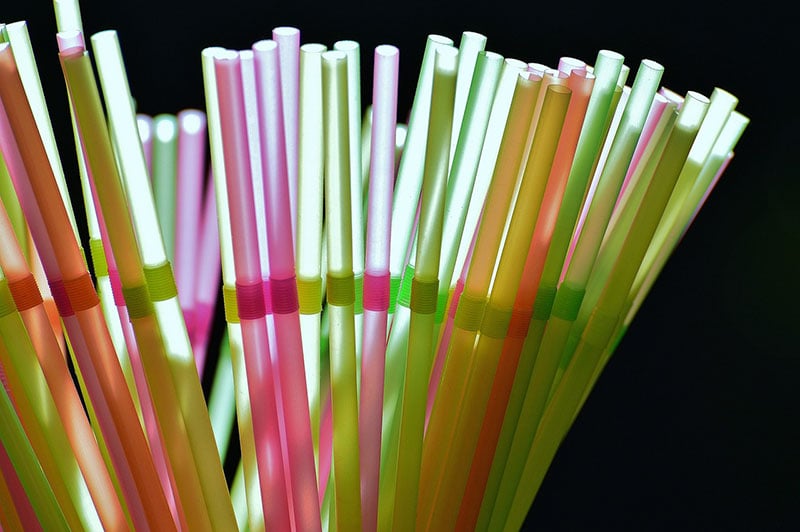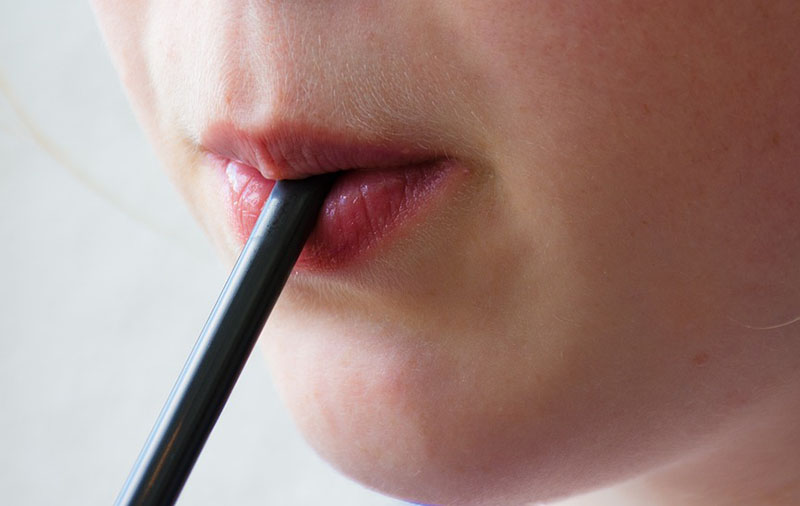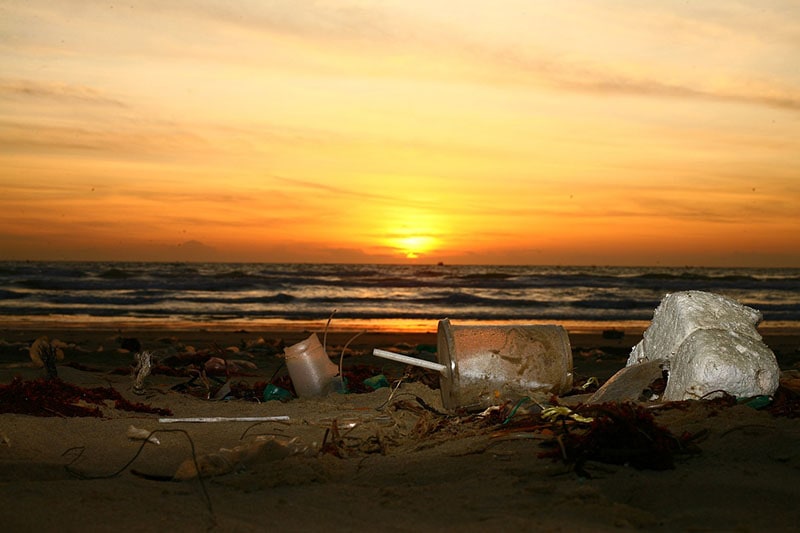Are Plastic Straws Recyclable? How Do You Properly Dispose of Them?
-
- Last updated:

Most of us would admit we don’t think much about the 1.6 straws we use daily. But realizing you’re adding to America’s 500-million-straw-a-day habit can be eye-opening, and even more so when you find out where those straws go after you pitch them.
Plastic straws, by design, cannot make it through a single round of recycling, whether you toss them in your blue bin or not. Instead, they can set off on adventures, from joining 7.5 million other straws currently lying across the nation’s beaches to taking up residence in the Great Pacific Garbage Patch.
There are a million places a used plastic straw could appear, but one thing is for sure—it won’t be in the recycling.

Are Plastic Straws Recyclable?
Plastic drinking straws typically consist of polypropylene or HDPE. Polypropylene (PP) is a #5 plastic that makes for a versatile drinking straw. PP is a popular plastic for countless everyday items, including bottle caps and food containers.
HDPE is a #2 plastic, which is a rigid substance that appears in milk cartons, spray bottles, and laundry detergent containers. Along with #1 plastics, HDPE products are generally okay to recycle as long as they’re clean.
PP #5 plastics may also be recyclable, though you’ll often have to check with your local service before tossing them in the blue bin. Organizations also exist that recycle mailed-in #5 plastics. Otherwise, most PP containers are sturdy enough for repurposing elsewhere, giving you plenty of extra use.
So, if HDPE and PP are at least somewhat recyclable, why don’t straws have the recycling logo?
Plastic straws aren’t recyclable, but the problem has less to do with the material and more with the plastic straw form. The extrusion process distorts the plastic, generally weakening its structure and making it unfit for recycling. But the more significant issue is that straws are too small to work in standard recycling systems.
Straws are challenging to separate, often falling through conveyor belts and sorting machines. They can end up in the wrong recycling pile, thus contaminating it, and most aren’t washed well enough for recyclers to consider them fit for repurposing. Like plastic bags, straws give recyclers too many processing headaches for them to be worth recycling.

Plastic Straws in the Environment
Plastic straws go in the trash en route to the landfill. But being so light, many of them go where the wind takes them, whether it’s a backyard, a roadside, or a beach. Every year, the world sends over 8 million metric tons of plastic into the ocean, accounting for roughly 80% of the debris swimming there. Globally, straws are one of the ten most frequently found coastal trash items.
Since they’re made of buoyant plastics, single-use straws float across the ocean, often joining one of the many floating garbage islands or being picked up by a marine creature. Experts estimate that plastic waste causes the death of roughly 100,000 sea creatures per year and up to 1 million seabirds. Seabirds can consume around 1/12th of their body weight in plastic. When animals ingest large amounts of plastic, they leave little room for actual digestible food and eventually starve.
Aside from physical dangers like cuts or choking, plastic straws contain toxic chemicals like PCBs and PAH. And while out in the elements, they can adsorb more hazardous compounds from the environment. The assorted toxins can disrupt hormonal processes and lead to life-threatening diseases, including cancer. And as plastics degrade, they become even more dangerous by working their way down the food chain.
When straws aren’t turning into a seabird’s afternoon snack, they sit and take roughly 200 years to break down. But plastic doesn’t decompose like organic materials through microbial digestion. Bacteria, fungi, and other microorganisms can’t consume plastic, so it instead undergoes photodegradation, a much slower process of breaking down from sun exposure.
Photodegradation of Plastic Straws and Microplastics
Photodegradation causes plastic straws to break down into smaller pieces, but they remain inorganic plastic materials called microplastics. By some estimates, the ocean contains up to 51 trillion microplastic particles, which find their way into the diets of all marine animals. That includes one of the world’s most critical creatures—plankton.
Plankton is a foundational element in the food chain and is responsible for much of the carbon cycling occurring in our oceans. Without the hard work of the surface algae absorbing CO2 and larger zooplankton dragging it down to the ocean floor, more greenhouse gasses would affect life above the surface.
Microplastics disrupt the carbon cycling process, keeping more CO2 at the surface and further adding to global warming. And as the bottom rung of the food chain, plankton injects microplastics and their assorted toxins into various creatures above it.
On land and in the sea, numerous kinds of wildlife consume microplastics. Since they’re at the top of the food chain, people see their fair share of microplastics eventually winding up at the dinner table. Some studies estimate that the average person consumes roughly five grams of microplastics each week, about the weight of a credit card. So, in a sense, we recycle plastic straws, but not in the way most of us would prefer.

A Drop in the Ocean
Burning through 500 million straws a day may sound egregious, but they’re hardly our primary issue with plastic. At about 0.4 grams per piece, the 182.5 billion straws that America disposes of each year weigh roughly 73,000 tons. It’s not a minute amount by most measures, but considering that the country generates over 35.5 million tons of plastic waste annually, that 0.2% seems relatively insignificant.
Plastic straws may be littering the beaches, but they make up an even smaller amount of the total plastic waste in the ocean than they do on the land. Straws only account for about 2,000 pounds, or roughly 0.02%, of the 9 million tons of plastic waste that enter the sea annually. While cutting plastic straws out of your daily life is one of the easier ways to reduce your footprint, much more should take priority for us to make meaningful changes.

Final Thoughts
Every piece of plastic, recyclable or not, has one destination—the landfill. The best recyclable plastics can go through the process up to 10 times. Most only enter recycling 1–2 times before becoming a downcycled product and eventually trash.
Recycling can slow the damage, but it is far from the best solution to our plastic waste woes. The only way to make a lasting impact is to reduce the amount of plastic you use and reuse what you can. Plastic straws aren’t the most significant factor affecting plastic waste, but forward progress is always beneficial. You can make a positive change today by opting out of straws at restaurants and using reusable items.
Featured Image Credit: Alexa, Pixabay
Contents

